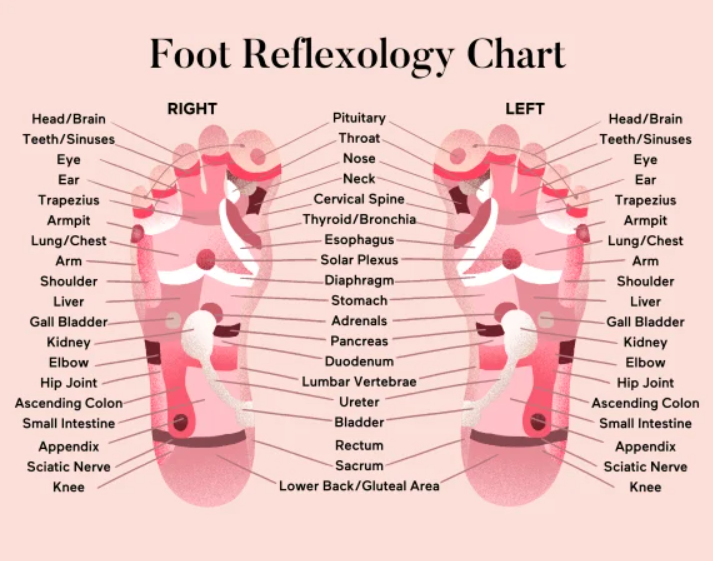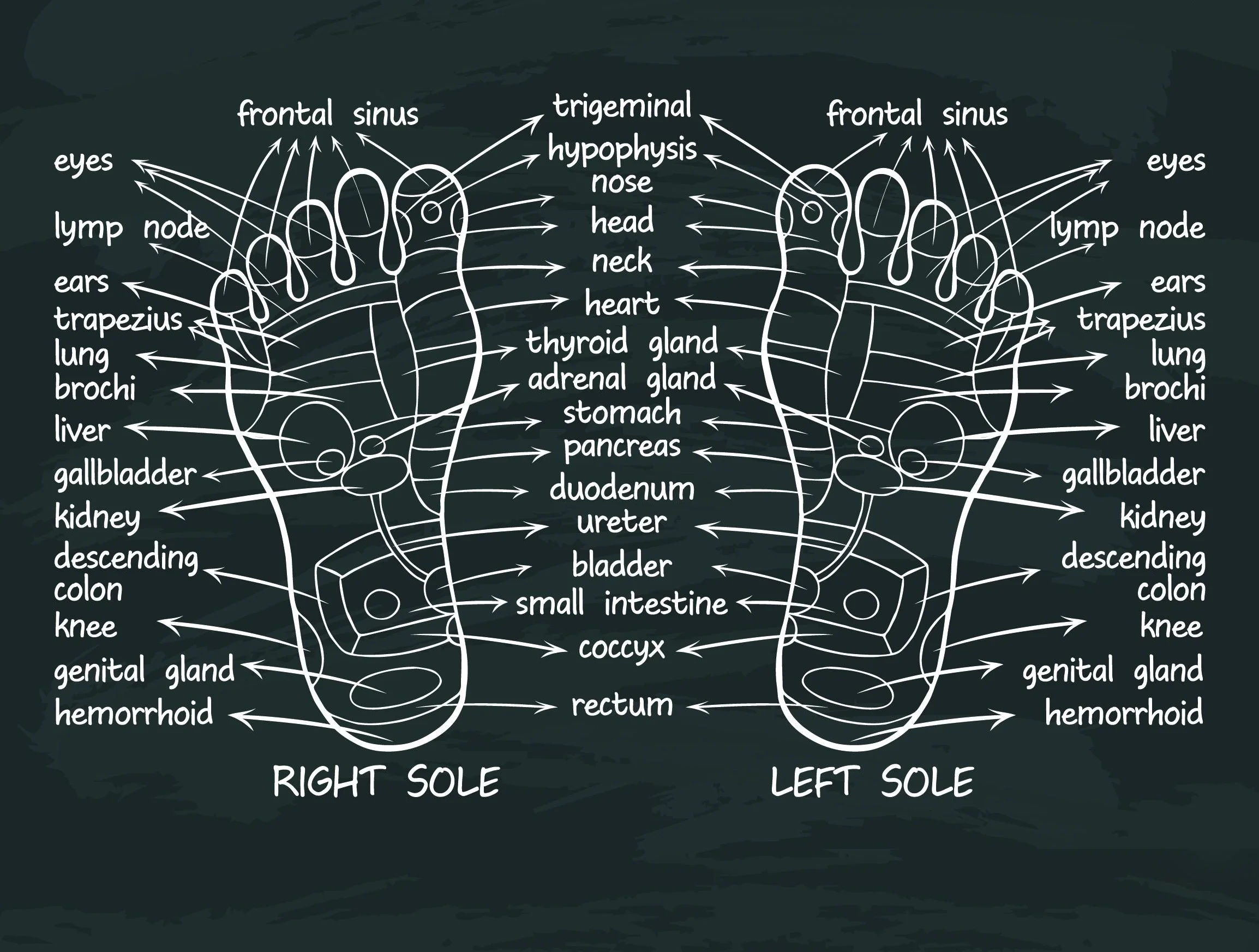Have you ever wondered about the incredible benefits of a foot massage? Well, wonder no more! A foot massage is not just a luxurious treat, but it also has numerous health benefits. From improved circulation and reduced stress to pain relief and better sleep, a foot massage can work wonders for your overall well-being. So sit back, relax, and allow your feet to experience the ultimate pampering session that will leave you refreshed and revitalized.

1. Physical relaxation
1.1 Relieves muscle tension
A foot massage is a wonderful way to relax your muscles and relieve tension. As the massage therapist applies pressure and kneads your feet, it helps to release the tightness in your muscles, reducing any discomfort or pain you may be experiencing. Whether you spend long hours on your feet or lead a sedentary lifestyle, a foot massage can provide the relief your muscles need.
1.2 Improves circulation
One of the key benefits of a foot massage is its ability to improve circulation. By applying pressure to specific points on your feet, a foot massage stimulates the blood flow, enhancing oxygenation and nutrient delivery to the various parts of your body. Improved circulation not only helps to keep your extremities warm, but it also supports the overall health of your organs and systems.
1.3 Enhances flexibility
Regular foot massages can help to enhance flexibility in your feet and ankles. As the massage therapist manipulates and stretches the muscles and tendons in your feet, it helps to increase their range of motion. This increased flexibility can be particularly beneficial if you participate in physical activities or if you have conditions like arthritis that affect your joints. By improving flexibility, a foot massage can contribute to better overall mobility and prevent injuries.
2. Stress and anxiety relief
2.1 Reduces stress levels
In today’s fast-paced world, stress is a common issue that many people face. Fortunately, a foot massage can provide a natural and effective way to reduce stress levels. The soothing touch and gentle kneading of a foot massage promote relaxation, helping to calm your mind and body. As the stress melts away, you may experience a sense of tranquility and rejuvenation.
2.2 Alleviates anxiety symptoms
Foot massages are known to alleviate symptoms of anxiety. The gentle pressure applied to your feet stimulates the production of endorphins, which are natural mood-boosting chemicals in your body. These endorphins create a sense of well-being and can help alleviate feelings of anxiety and stress. A foot massage can be particularly beneficial for individuals who struggle with anxiety disorders or those who simply want to unwind after a long day.
2.3 Promotes better sleep
If you struggle with sleep issues, a foot massage can be a valuable tool in promoting better sleep. The relaxation induced by a foot massage helps to calm your mind and body, making it easier to fall asleep and stay asleep throughout the night. Additionally, the increase in blood circulation and release of endorphins can create a sense of deep relaxation, leading to a more restful sleep experience.
3. Pain management
3.1 Relieves foot and ankle pain
If you suffer from foot and ankle pain, a foot massage can provide much-needed relief. By targeting specific pressure points in your feet, a skilled massage therapist can alleviate pain caused by conditions such as plantar fasciitis, arthritis, or general muscle soreness. Regular foot massages can help to decrease pain levels and improve your overall comfort and mobility.
3.2 Eases migraines and headaches
Many people don’t realize that a foot massage can actually help to ease migraines and headaches. By applying pressure to specific points on the feet that correspond to the head and neck, a foot massage can help to relieve tension and alleviate the pain associated with headaches. This drug-free approach to pain management offers a natural alternative for individuals seeking relief from migraines and headaches.
3.3 Helps with plantar fasciitis
Plantar fasciitis is a common foot condition that causes pain and inflammation in the heel. A foot massage can be an effective complementary treatment for plantar fasciitis. By kneading and stretching the plantar fascia ligament, a foot massage helps to reduce inflammation and alleviate pain. Regular foot massages, coupled with other treatment modalities such as stretching exercises, can lead to significant improvement in plantar fasciitis symptoms.
4. Improved mood and mental well-being
4.1 Releases endorphins
A foot massage triggers the release of endorphins, which are natural feel-good chemicals produced by your body. These endorphins create a sense of euphoria and well-being, instantly lifting your mood and improving your mental state. Whether you’re feeling down or simply want to enhance your overall mood, a foot massage can provide the emotional boost you need.
4.2 Encourages relaxation and calmness
Feeling overwhelmed or stressed? A foot massage can be your escape to relaxation and calmness. The gentle touch and rhythmic strokes during a foot massage stimulate the parasympathetic nervous system, triggering a relaxation response in your body. This relaxation response helps to reduce anxiety, lower heart rate, and promote a sense of calmness, allowing you to leave your worries behind and enjoy a peaceful state of mind.
4.3 Reduces symptoms of depression
Depression is a serious mental health condition that affects millions of people worldwide. While a foot massage may not be a cure for depression, it can certainly help alleviate some of its symptoms. The combination of physical touch, relaxation, and the release of endorphins during a foot massage can provide temporary relief from the feelings of sadness and hopelessness associated with depression. It’s important to seek professional help for managing depression but incorporating foot massages into your self-care routine can be a positive addition.

5. Enhancing immune system
5.1 Boosts lymphatic drainage
The lymphatic system plays a crucial role in immune function by clearing toxins and waste from the body. A foot massage can help boost lymphatic drainage, allowing the lymph fluid to flow freely and efficiently. By stimulating the lymphatic system, a foot massage enhances the body’s ability to eliminate toxins and waste products, ultimately supporting a healthier immune system.
5.2 Strengthens the immune system
In addition to supporting the lymphatic system, a foot massage can also strengthen the immune system in other ways. The increase in blood circulation and lymphatic flow that occurs during a foot massage helps to deliver oxygen and nutrients to the body’s cells, which are essential for optimal immune function. By enhancing the overall health and functioning of the immune system, a foot massage can help to prevent illness and promote overall well-being.
5.3 Accelerates healing processes
When your body is injured or recovering from an illness, a foot massage can play a role in accelerating the healing process. By increasing blood circulation and lymphatic flow, a foot massage delivers essential nutrients and oxygen to the affected areas, aiding in tissue repair and rejuvenation. Whether you’re recovering from a sprained ankle or battling a common cold, incorporating a foot massage into your recovery routine can support the body’s natural healing processes.
6. Detoxification
6.1 Eliminates toxins
A foot massage can assist in the detoxification process by helping your body eliminate toxins. The application of pressure and kneading stimulates the lymphatic system, aiding in the removal of waste products and toxins from your body. As the lymphatic system is activated during a foot massage, toxins are flushed out and expelled, leaving you feeling refreshed and revitalized.
6.2 Improves organ function
By promoting detoxification, a foot massage indirectly improves the function of your organs. As toxins are eliminated from your body, the burden on your organs is reduced, allowing them to function more efficiently. The improved organ function can have a positive impact on your overall health and well-being.
6.3 Cleanses the body
A foot massage is not just a pampering indulgence; it can actually help to cleanse your body from within. The techniques used during a foot massage stimulate the reflex zones on your feet that correspond to various parts of your body, including your organs. This stimulation helps to activate these areas and promote detoxification, allowing your body to rid itself of impurities and rejuvenate from the inside out.
7. Improved blood circulation
7.1 Increases oxygenation
Proper blood circulation is essential for overall health and vitality. A foot massage can significantly improve blood circulation in your lower extremities, enhancing oxygenation to the tissues and organs. By increasing the flow of freshly oxygenated blood to your feet, a foot massage can help relieve fatigue and promote optimal functioning of the entire body.
7.2 Reduces blood pressure
High blood pressure can have detrimental effects on your health and increase the risk of cardiovascular disease. Regular foot massages can help combat high blood pressure by improving blood circulation and relaxing your body. The release of endorphins during a foot massage also contributes to a reduction in blood pressure and promotes a calmer, more balanced state.
7.3 Enhances nutrient delivery
Improved blood circulation resulting from a foot massage also enhances the delivery of nutrients to the cells throughout your body. As nutrients are carried more efficiently through your bloodstream, they reach your organs, muscles, and tissues more effectively. This increased nutrient delivery optimizes the functioning of your body as a whole, supporting its overall health and well-being.
8. Relief for pregnant women
8.1 Eases swollen feet and ankles
Pregnancy can bring about various discomforts, and swollen feet and ankles are common complaints among expectant mothers. A foot massage can provide much-needed relief by reducing swelling and promoting better circulation. The gentle kneading and pressure applied during a foot massage help to stimulate lymphatic drainage, allowing excess fluids to be flushed out and reducing swelling in the lower extremities.
8.2 Promotes relaxation during pregnancy
Pregnancy can be a time of heightened stress and anxiety. Regular foot massages during pregnancy can contribute to relaxation and emotional well-being. By releasing tension and promoting relaxation, a foot massage can help expectant mothers find comfort and relief from the physical and emotional demands of pregnancy.
8.3 Reduces labor pain
Research suggests that foot massage during pregnancy may contribute to reduced labor pain. The release of endorphins and the relaxation response triggered by a foot massage can help prepare the body for childbirth. Additionally, the stimulation of certain pressure points on the feet may help to induce contractions naturally, potentially aiding in the progression of labor.
9. Nerve stimulation
9.1 Soothes nerve pain
Nerve pain can be debilitating and greatly affect your quality of life. A foot massage can provide relief from nerve pain by soothing and desensitizing the nerves. The application of pressure and the manipulation of specific points on your feet help to stimulate the release of feel-good neurotransmitters, alleviating nerve-related discomfort and promoting a sense of relief.
9.2 Stimulates nerve endings
A foot massage stimulates thousands of nerve endings present in your feet. These nerve endings connect to various parts of your body and play a crucial role in sending sensory information to your brain. By stimulating these nerve endings through massage, you can improve their function and enhance their ability to transmit signals effectively. This stimulation can have a positive impact on your overall nervous system health.
9.3 Boosts neural connections
Engaging in regular foot massages can have a positive impact on your neurological health. The stimulation of nerve endings during a foot massage helps to promote the development of neural connections and improves the coordination between different parts of your body. By boosting neural connections, a foot massage can enhance your motor skills, coordination, and overall physical performance.
10. Rejuvenation and anti-aging
10.1 Stimulates collagen production
Collagen is a vital protein that contributes to the elasticity and strength of your skin. As you age, collagen production decreases, leading to the appearance of wrinkles and sagging skin. A foot massage can stimulate collagen production in your feet and ankles, aiding in the maintenance of skin elasticity and reducing the signs of aging. By regularly massaging your feet, you can promote a more youthful and rejuvenated appearance.
10.2 Improves skin elasticity
In addition to stimulating collagen production, a foot massage can improve the overall elasticity of your skin. The rhythmic strokes and manipulations involved in a foot massage increase blood circulation to the skin’s surface, promoting the delivery of oxygen and nutrients. This improved blood flow helps to nourish your skin and enhance its elasticity, making it appear smoother and more supple.
10.3 Reduces signs of aging
A foot massage can indeed be a part of your anti-aging routine. The combined benefits of improved circulation, collagen stimulation, and enhanced skin elasticity contribute to a reduction in the signs of aging. Regular foot massages can help minimize the appearance of fine lines, wrinkles, and age spots, allowing you to maintain a more youthful and vibrant complexion.
In conclusion, a foot massage offers a multitude of benefits for your physical, mental, and emotional well-being. From providing relaxation and stress relief to alleviating pain and promoting detoxification, foot massages can have a profound impact on your overall health. Whether you seek relief from specific conditions or simply desire a moment of pure relaxation, incorporating regular foot massages into your self-care routine can be a wonderful investment in your overall wellness. So kick off your shoes, find a comfortable spot, and treat yourself to the incredible benefits of a rejuvenating foot massage.












